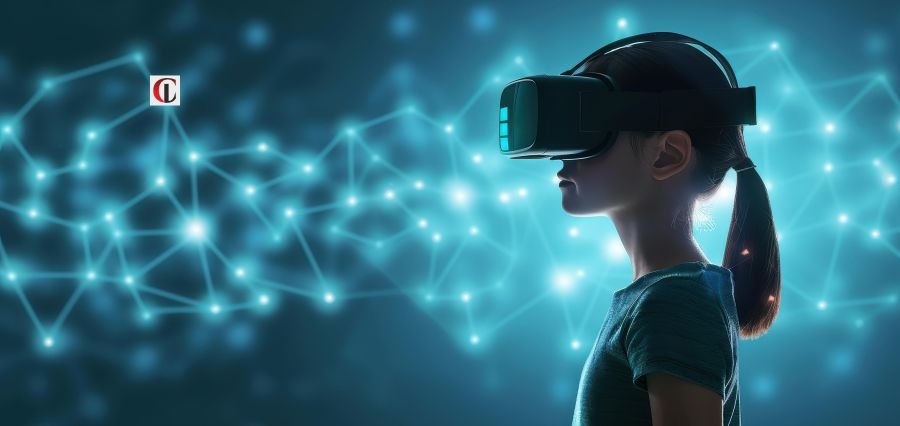With the fast-paced learning environment of the present, technology is rising as a driver of change. With technologies based on computers increasingly being implemented in classrooms, teachers and schools are unlocking the power of educational technology (EdTech) to facilitate learner engagement, personalize learning, and fuel academic success. The pandemic-facilitated shift toward online learning has accelerated this development further, creating new ways of delivering content and interacting with learners. These technologies are not just building upon what exists; they are changing the very fabric of education being delivered at every level. Contemporary EdTech is not merely about easy adoption of new tools or devices. From gamification and AI to virtual reality, augmented reality, and real-time data analysis, next-gen classrooms are being redefined in innovative and interactive terms.
Artificial Intelligence and Adaptive Learning
Artificial Intelligence (AI) is increasingly becoming an integral aspect of education, especially in adaptive learning software that tailor’s education to every student. Such programs use real-time data to assess a student’s strengths, weaknesses, and achievements. With this information, the system can also personalize content to suit the learning speed and learning abilities of each student. Teachers can, for instance, use the website to provide extra practice exercises, tips, or instructional videos on the spot if a student is having trouble with a specific math topic. It’s adaptive learning that maximizes student comprehension and retention. Apart from supporting students, AI also supports teachers by freeing them from repetitive administrative work.
Grading, attendance, and performance reporting are tasks that are done on a regular basis and would be made all the more effective if they used the help of AI tools. It then gives the instructors the time to concentrate more on teaching pedagogy and individual care. There are even some education systems that use AI-powered teaching assistants who answer the students’ questions in real time. These technologies reduce the burden on the instructors and enhance the class setting by speeding up learning and making it easier. Besides this, with technological advancements in AI, it can have the potential to enable early interventions through the identification of learning patterns and the provision of personalized support strategies in an effort to avoid falling behind among the students.
Virtual and Augmented Reality Immersive Learning
Augmented Reality (AR) and Virtual Reality (VR) are transforming learning modes by content. Interactive technologies enable students to learn complex learning topics in a very visual and interactive manner. Using AR and VR, students can see ancient monuments, travel to the solar system, or navigate the human body in three-dimensional form. It makes general topics concrete and enables the students to learn by experience.
Aside from learning the content, online learning enables collaboration and critical thinking. Students can work on projects online, undergo simulation, and participate in role-playing that offers real-life scenarios. Active learning is made possible through such activities, and students are able to acquire skills like problem-solving, communication, and flexibility. Immersive learning spaces also accommodate multiple learning styles, especially visual and kinesthetic learners. With AR and VR technology becoming less expensive and more mainstream, schools are incorporating these technologies to develop student-centered classrooms that are far more expansive than the classroom itself. For rural or disadvantaged communities where lab, museum, or field-trip learning opportunities are not normally part of the budget, immersive technology can provide access to experiences otherwise unavailable.
Gamification and Learning Analytics
Gamification is the use of game mechanics such as points, levels, badges, and leaderboards within course material in an effort to motivate and engage students. Through use of game mechanics within course materials, educators can turn boring lessons into interesting and competitive learning exercises. Gamification renders students as motivated, self-motivated, and apply effort whenever there is a problem. Gamification also enables students to receive feedback in real time, so they can see how they are doing and where they need to push themselves harder.
Meanwhile, learning analytics is giving key feedback on students’ learning behavior and performance. Technologies based on data allow teachers to monitor engagement, monitor the progress of students academically, and detect knowledge gaps. With up-to-the-minute access to information, teachers can pivot instruction, create focused interventions, and modify instructional approaches to more effectively answer the particular needs of learners. Learning analytics also support long-term planning through the discovery of trends and patterns that inform curriculum planning and development and institutional decision-making.
Conclusion
EdTech trends are sparking a sweeping revolution in the classroom, constructing a future where learning is more individualized, engaging, and available. Technologies like AI, AR, VR, gamification, and learning analytics are not novel technology; they are building blocks for a novel education model. These tools provide new means of engaging with multiple needs of learners as well as empowering educators to teach better. With increasing usage of EdTech, educators and policymakers alike must accord highest priority to optimal implementation. Technology needs to be employed in the service of well-defined learning objectives and in a manner that maximizes improved learning outcomes. No less important will be equitable access to such tools so that all, and not just those in wealthier communities, stand a chance to benefit from the bounties of digital innovation.
Read More: Strategic Innovation: Innovative Leadership Trends Shaping Education

